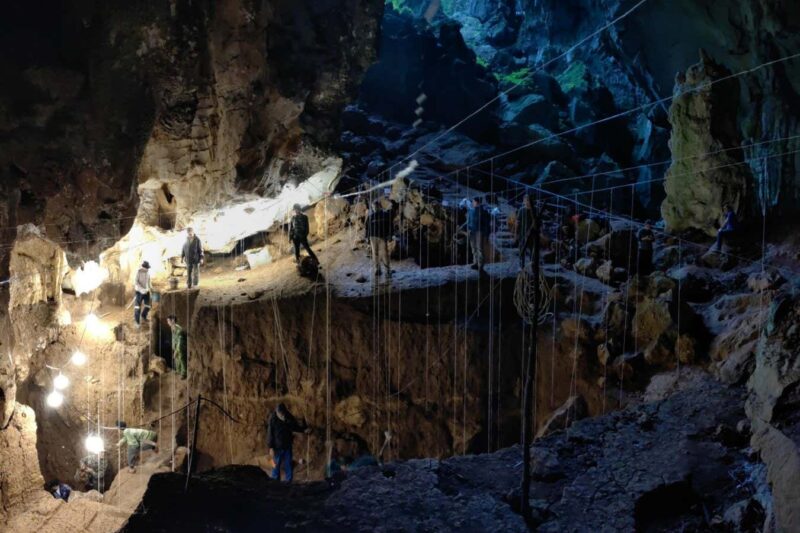Tam Pà Ling cave in northern Laos, where several human fossils dating back tens of thousands of years have been found
Fabrice Demeter
Fossils from a cave in Laos provide evidence that modern humans were present in mainland South-East Asia about 86,000 years ago. Fragments of bone belonging to Homo sapiens were discovered and the findings shed new light on the migration of our species from Africa to Asia.
Since 2009, several modern human fossils have been found in Tam Pà Ling, a cave in northeast Laos. The fossils, which date back between 46,000 and 70,000 years ago, have been added to over the years. Now, Fabrice Demeter from the University of Copenhagen in Denmark, and his team have unearthed two more fossils.
Demeter explains that one of his colleagues in Laos initially mistook a piece of bone for a rock. After closer inspection, it was revealed to be a small fragment of a human skull. They also discovered a piece of a human shinbone. By dating the sediment surrounding the fossils in the cave with radioactive isotopes, the team estimates that they are between 68,000 and 86,000 years old. This makes them the oldest known modern human fossils in mainland South-East Asia.
Earlier estimates suggested that early modern humans arrived in South-East Asia around 50,000 years ago, spreading out from Africa to populate different parts of the world, including Asia. However, the new findings indicate that this migration occurred much earlier than previously believed. Additionally, the fossils in Tam Pà Ling could potentially be from the ancestors of Indigenous Australians, whose remains in Australia have been dated even earlier than 50,000 years ago. Further research is needed to determine their origins.
Co-author Laura Shackelford from the University of Illinois Urbana-Champaign suggests that genetic data supports the idea that earlier migrations out of Africa may have been unsuccessful. The discoveries in Tam Pà Ling provide valuable insights into human migration patterns.
“One of the most debated topics in palaeoanthropology today continues to be modern human origins,” says Christopher J. Bae from the University of Hawai’i at Manoa. “This particular study clearly shows that modern humans were in the region earlier than originally believed.”
Topics:








